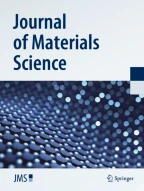Abstract
Microcrystalline cellulose (MCC) powder was selected as a natural reinforcement for a commercial acrylic adhesive widely used in the field of art protection and restoration (Paraloid B72). In particular, various amounts (from 5 to 30 wt%) of MCC were melt compounded with Paraloid B72 to prepare new thermoplastic polymer composites for the cultural heritage conservation field. Scanning electron microscopy showed that MCC flakes are uniformly dispersed within the matrix at all the tested compositions, without preferential orientation. Thermogravimetric analysis evidenced an increase of thermal stability due to the MCC introduction, even at low filler amounts, while DSC measurements demonstrated that the glass transition temperature progressively increases with the MCC content. Interestingly, DMTA analysis revealed a stabilizing effect on the material produced by microcellulose addition, with an increase of the storage modulus and a decrease of the thermal expansion coefficient, in proportion to the filler loading. Moreover, MCC addition determined an increase of the elastic modulus and creep stability with respect to the neat resin, and an enhancement of fracture toughness (K IC).
Similar content being viewed by others
Explore related subjects
Discover the latest articles, news and stories from top researchers in related subjects.References
Mills JS, White R (1994) The organic chemistry of museum objects, 2nd edn. Butterworth, Oxford
Van Oosten T, Shashoua Y, Waentig F (2002) Plastics in arts: history, technology, preservation. Kölner Beiträge zur Restaurierung und Konservierung von Kunst- und Kulturgut Band 15. Siegl, Munich
Robson M (1992) Early advances in the use of acrylic resins for the conservation of antiquities. In: Allen NS, Edge M, Horie CV (eds) Polymers in conservation. Royal Society of Chemistry, Cambridge, p 184
Taylor TH (1984) In situ repair of architectural glass, adhesives and consolidants. International Institute for Conservation, London
Amoroso GG, Fassina V (1973) Stone decay and conservation. Elsevier, Amsterdam
Chiantore O, Lazzari M (2001) Photo-oxidative stability of paraloid acrylic protective polymers. Polymer 42(1):17–27
Lazzari M, Chiantore O (2000) Thermal-ageing of paraloid acrylic protective polymers. Polymer 41(17):6447–6455
Sale D (2011) Yellowing and appearance of conservation adhesives for poly(methyl methacrylate): a reappraisal of 20-year-old samples and test methods. In: Adhesives and consolidants for conservation, Ottawa
Chapman S, Mason D (2003) Literature review: the use of Paraloid B-72 as a surface consolidant for stained glass. J Am Inst Conserv 42(11):381–392
Down JL, MacDonald MA, Tétreault J, Williams RS (1996) Adhesive testing at the Canadian Conservation Institute: an evaluation of selected poly(vinyl acetate) and acrylic adhesives. Stud Conserv 41(1):19–44
Hansen EF, Derrick MR, Schilling MR, Garcia R (1991) The effects of solution application on some mechanical and physical properties of thermoplastic amorphous polymers used in conservation: poly(vinyl acetate)s. J Am Inst Conserv 30(2):203–213
Keskkula H, Paul DR (1986) Miscibility of polyethyloxazoline with thermoplastic polymers. J Appl Polym Sci 31(5):1189–1197
Spoljaric S, Genovese A, Shanks RA (2009) Polypropylene–microcrystalline cellulose composites with enhanced compatibility and properties. Composites A 40(6–7):791–799
Shanks RA, Hodzic A, Ridderhof D (2006) Composites of poly(lactic acid) with flax fibers modified by interstital polymerization. J Appl Polym Sci 99(23):5–13
Gaonkar SM, Kulkarni PR (1989) Microcrystalline cellulose from coconut shells. Acta Polym 40(4):292–294
Padmadisastra Y, Gonda I (1989) Preliminary studies of the development of a direct compression cellulose excipient from bagasse. J Pharm Sci 78(6):508–514
Thummanukitcharoen P, Limpanart S, Srikulkit K (2011) Preparation of organosilane treated microcrystalline cellulose (SIMCC) and the polypropylene/SIMCC composite. In: 18th International conference on composite materials, Jeju Island
Chauhan YP, Sapkal RS, Sapkal VS, Zamre GS (2009) Microcrystalline cellulose from cotton rags (waste from garment and hosiery industries). Int J Chem Sci 7(2):681–688
Das K, Ray D, Bandyopadhyay NR, Sengupta S (2010) Study of the properties of microcrystalline cellulose particles from different renewable resources by XRD, FTIR, nanoindentation, TGA and SEM. J Polym Environ 18(3):355–363
Qui W, Endo T, Hirotsu T (2006) Interfacial interaction, morphology and tensile properties of a composite of highly crystalline cellulose and maleated polypropylene. J Appl Polym Sci 102(38):30–41
Dorigato A, D’Amato M, Pegoretti A (2012) Thermo-mechanical properties of high density polyethylene—fumed silica nanocomposites: effect of filler surface area and treatment. J Polym Res 19:9889–9899
Dorigato A, Pegoretti A, Quaresimin M (2011) Thermo-mechanical characterization of epoxy/clay nanocomposites as matrices for carbon/nanoclay/epoxy laminates. Mater Sci Eng A 528:6324–6333
Bledzki AK, Gassan J (1999) Composites reinforced with cellulose based fibres. Prog Polym Sci 24:221–274
Kalaitzidou K, Fukushima H, Drzal LT (2007) Mechanical properties and morphological characterization of exfoliated graphite–polypropylene nanocomposites. Composites A 38:1675–1682
Dorigato A, Morandi S, Pegoretti A (2012) Effect of nanoclay addition on the fiber/matrix adhesion in epoxy/glass composites. J Compos Mater 46:1439–1451
Kiziltas A, Gardner DJ, Han Y, Yang HS (2011) Dynamic mechanical behavior and thermal properties of microcrystalline cellulose (MCC)-filled nylon 6 composites. Thermochim Acta 519(1–2):38–43
Mathew AP, Oksman K, Sain MM (2005) Mechanical properties of biodegradable composites from poly lactic acid (PLA) and microcrystalline cellulose (MCC). J Appl Polym Sci 97:2014–2025
Lavengood RE, Goettler LA (1971) Stiffness of non-aligned fiber reinforced composites. US Government R&D Reports, vol AD886372. National Technical Information Service, Springfield
Halpin JC (1969) Stiffness and expansion estimates for oriented short fibre composites. J Compos Mater 3:732–735
Hancock BC, Clas S-D, Christensen K (2000) Micro-scale measurement of the mechanical properties of compressed pharmaceutical powders. 1: the elasticity and fracture behavior of microcrystalline cellulose. Int J Pharm 209(1–2):27–35
Eichhorn SJ, Young RJ (2001) The young’s modulus of a microcrystalline cellulose. Cellulose 8:197–207
Author information
Authors and Affiliations
Corresponding author
Rights and permissions
About this article
Cite this article
Cataldi, A., Dorigato, A., Deflorian, F. et al. Thermo-mechanical properties of innovative microcrystalline cellulose filled composites for art protection and restoration. J Mater Sci 49, 2035–2044 (2014). https://doi.org/10.1007/s10853-013-7892-6
Received:
Accepted:
Published:
Issue Date:
DOI: https://doi.org/10.1007/s10853-013-7892-6
